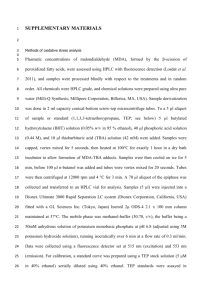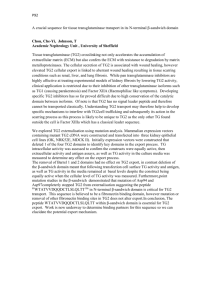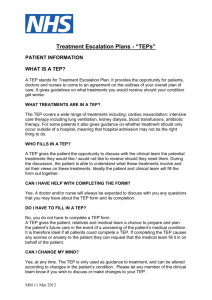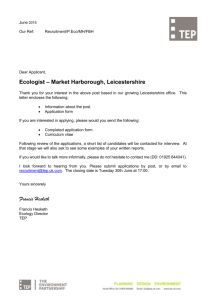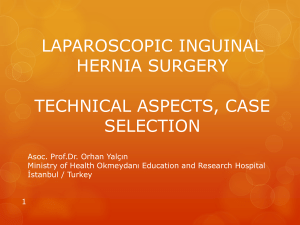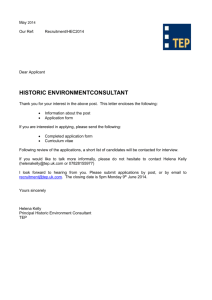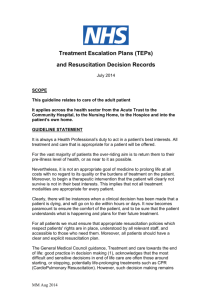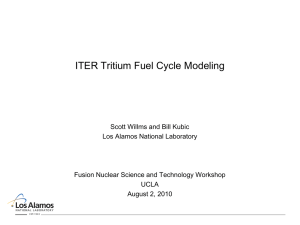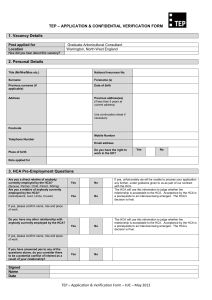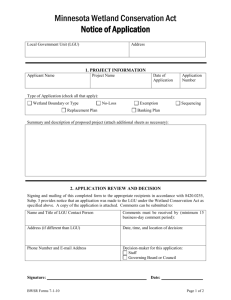Supplementary Information (docx 21K)
advertisement
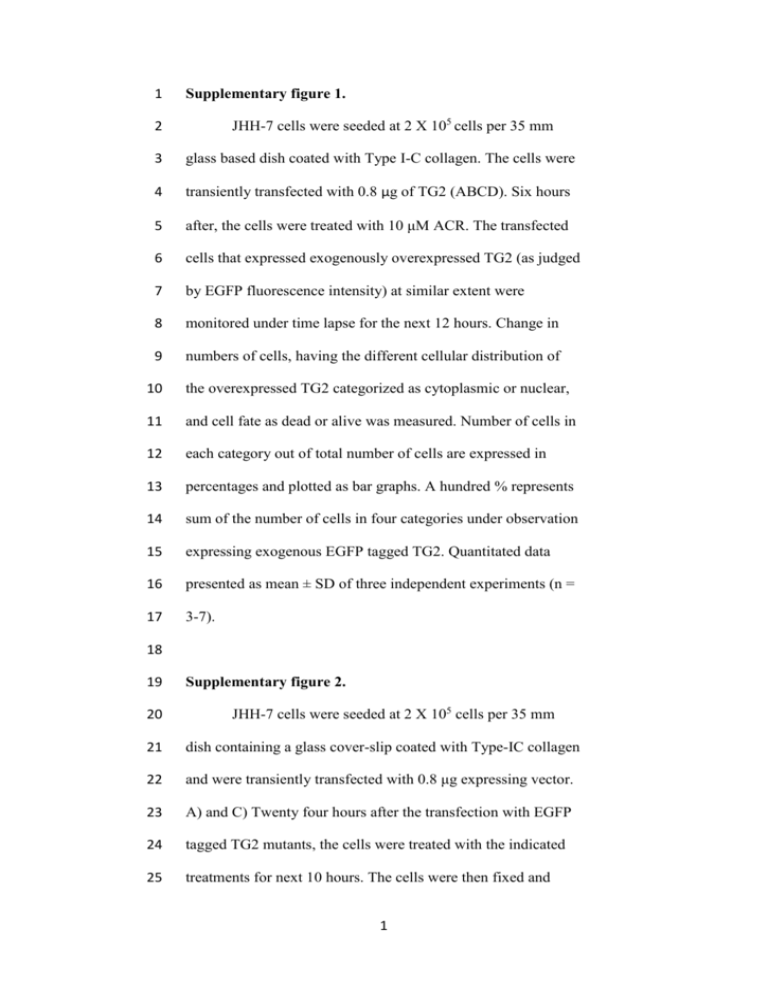
1
Supplementary figure 1.
JHH-7 cells were seeded at 2 X 105 cells per 35 mm
2
3
glass based dish coated with Type I-C collagen. The cells were
4
transiently transfected with 0.8 μg of TG2 (ABCD). Six hours
5
after, the cells were treated with 10 μM ACR. The transfected
6
cells that expressed exogenously overexpressed TG2 (as judged
7
by EGFP fluorescence intensity) at similar extent were
8
monitored under time lapse for the next 12 hours. Change in
9
numbers of cells, having the different cellular distribution of
10
the overexpressed TG2 categorized as cytoplasmic or nuclear,
11
and cell fate as dead or alive was measured. Number of cells in
12
each category out of total number of cells are expressed in
13
percentages and plotted as bar graphs. A hundred % represents
14
sum of the number of cells in four categories under observation
15
expressing exogenous EGFP tagged TG2. Quantitated data
16
presented as mean ± SD of three independent experiments (n =
17
3-7).
18
19
20
Supplementary figure 2.
JHH-7 cells were seeded at 2 X 105 cells per 35 mm
21
dish containing a glass cover-slip coated with Type-IC collagen
22
and were transiently transfected with 0.8 μg expressing vector.
23
A) and C) Twenty four hours after the transfection with EGFP
24
tagged TG2 mutants, the cells were treated with the indicated
25
treatments for next 10 hours. The cells were then fixed and
1
26
stained with H33258. B) Forty eight hours after the transfection
27
with GAPDH myc-HIS fused with either SV40 NLS or a novel
28
TG2 NLS, the cells were fixed and immunostained using a
29
FITC tagged antibody against myc and co-stained with H33258.
30
Green fluorescence intensities derived from EGFP or FITC
31
along with blue fluorescence from H33258 were monitored
32
under confocal microscope. Transfected cells expressing
33
nuclear TG2 mutants observed in 320 µm x 320 µm
34
microscopic field area were classified into four categories as
35
we indicated in figure 2 in the main text, and cell numbers in
36
each category under each condition were counted and
37
expressed in percentages calculated against total number of
38
counted cells expressing exogenous TG2 mutants in the area.
39
The percentage obtained from 4-6 microscopic fields in the
40
same experiment is presented as mean ± SD. *p-value <0.05,
41
**p-value <0.01. A representative result from 3 independent
42
experiments with similar results is presented.
43
44
45
Supplementary figure 3.
Recombinant human TG2 (1.5 p mole) was incubated
46
for 1 hour at room temperature with glutathione Sepharose 4B
47
beads conjugated with six times molar excess of GST-
48
importins-α3/HA tagged importin-β complex in the presence or
49
absence of ATP, EtOH, ACR or Z-DON as indicated. After
50
spin-down, proteins were eluted with SDS-PAGE sample
2
51
buffer and TG2 levels in each co-precipitate obtained under
52
each condition were determined by western blotting using an
53
antibody against TG2.
54
55
56
Supplementary figure 4.
JHH-7 cells were seeded at 2 X 105 cells per 35 mm
57
glass based dish coated with Type I-C collagen. The cells were
58
transiently transfected with 0.8 μg of (A) TG2 (AB) or (B) TG2
59
(CD). Six hours after, the cells were treated with 0.1% EtOH or
60
10 μM ACR when indicated. The transfected cells that
61
expressed exogenously overexpressed TG2 (as judged by
62
EGFP fluorescence intensity) at similar extent were monitored
63
under time lapse for the next 12 hours. Change in numbers of
64
cells having the different cellular distribution of the
65
overexpressed TG2 categorized as cytoplasmic or nuclear, and
66
cell fate as dead or alive. Number of cells in each category out
67
of total number of cells are expressed in percentages and
68
plotted as bar graphs. A hundred % represents sum of the
69
number of cells in four categories under observation expressing
70
exogenous EGFP tagged TG2. Quantitated data presented as
71
mean ± SD of three independent experiments (n = 3-7). (C)
72
Time course changes in each category of (B) are plotted as Box
73
and Whisker diagrams showing each sample value as a dot. The
74
lower side and upper side of boxes represent 25 and 75
75
percentiles in each distribution, respectively. The line and plus
3
76
sign in the box represents median and mean value respectively.
77
Ends of the whiskers represent either the highest or lowest
78
sample values.
79
80
81
Supplementary figure 5.
NCBI Align Sequences Protein BLAST was used for
82
aligning the newly identified NLS sequence of human TG2
83
with A) other members of human transglutaminase family
84
proteins B) TG2 proteins of other mammalian species. Multiple
85
sequence alignment columns with no gaps are colored in blue
86
or red. The red color indicates highly conserved amino acids
87
and blue indicates less conserved ones.
88
89
Supplementary figure 6.
90
NCBI Align Sequences Protein BLAST was used for
91
aligning the computationally predicted putative and currently
92
confirmed NES sequence of human TG2 with A) other
93
members of human transglutaminase family proteins B) TG2
94
proteins of other mammalian species. Multiple sequence
95
alignment columns with no gaps are colored in blue or red. The
96
red color indicates highly conserved amino acids and blue
97
indicates less conserved ones.
98
99
100
4
101
102
Supplementary figure 7.
JHH-7 cells were seeded at 1 X 106 cells per 10 cm dish
103
for overnight. The cells were then treated with 0.1% EtOH
104
(column 1, 3, and 5) or 10 µM ACR (column 2, 4, and 6) for
105
next 5 hours. The cells were lysed using Tris buffer (pH7.4)
106
containing 1% Triton X-100, 0.1mg/mL PMSF and the protease
107
inhibitor cocktail. Exportin-1 was co-immunoprecipitated using
108
CRM1 antibody from samples containing equal amount of total
109
protein determined by bicinchoninic acid (BCA) protein assay
110
method. After precipitation, proteins were eluted with SDS-
111
PAGE sample buffer and TG2 level in each co-precipitation
112
obtained under each condition was determined by western
113
blotting using an antibody indicated.
114
115
116
Supplementary table 1.
JHH-7 cells were seeded at 1 X 104 cells per well in a
117
96 well plate coated with Type I-C collagen. The cells were
118
transiently transfected with 0.04 μg of A) EGFP, B) EGFP-
119
TG2 (ABCD), C) EGFP-(ABC), D) 2x EGFP TG2 (C), E) 2x
120
EGFP TG2 (CD), F) 2xEGFP TG2 (465-479), G) 2xEGFP TG2
121
(1-479). Eighteen hours after the transfection, fluorescence
122
intensity from each the mutant was monitored till 60 hours in
123
an interval of 6 hours using Image express. Fluorescence half-
124
life of the overexpressed protein was calculated using formula
125
t1/2 = [{(ln(2)*t}/ln(N0/Nt)], where No is the initial
5
126
fluorescence intensity and Nt is the fluorescence intensity at
127
time t. No was the highest fluorescence intensity observed
128
during the time course and Nt was the fluorescence intensity
129
observed either at 6, 12, 24 or 36 hours after No. An average
130
value ± SD of three calculated t1/2 values is given.
6
